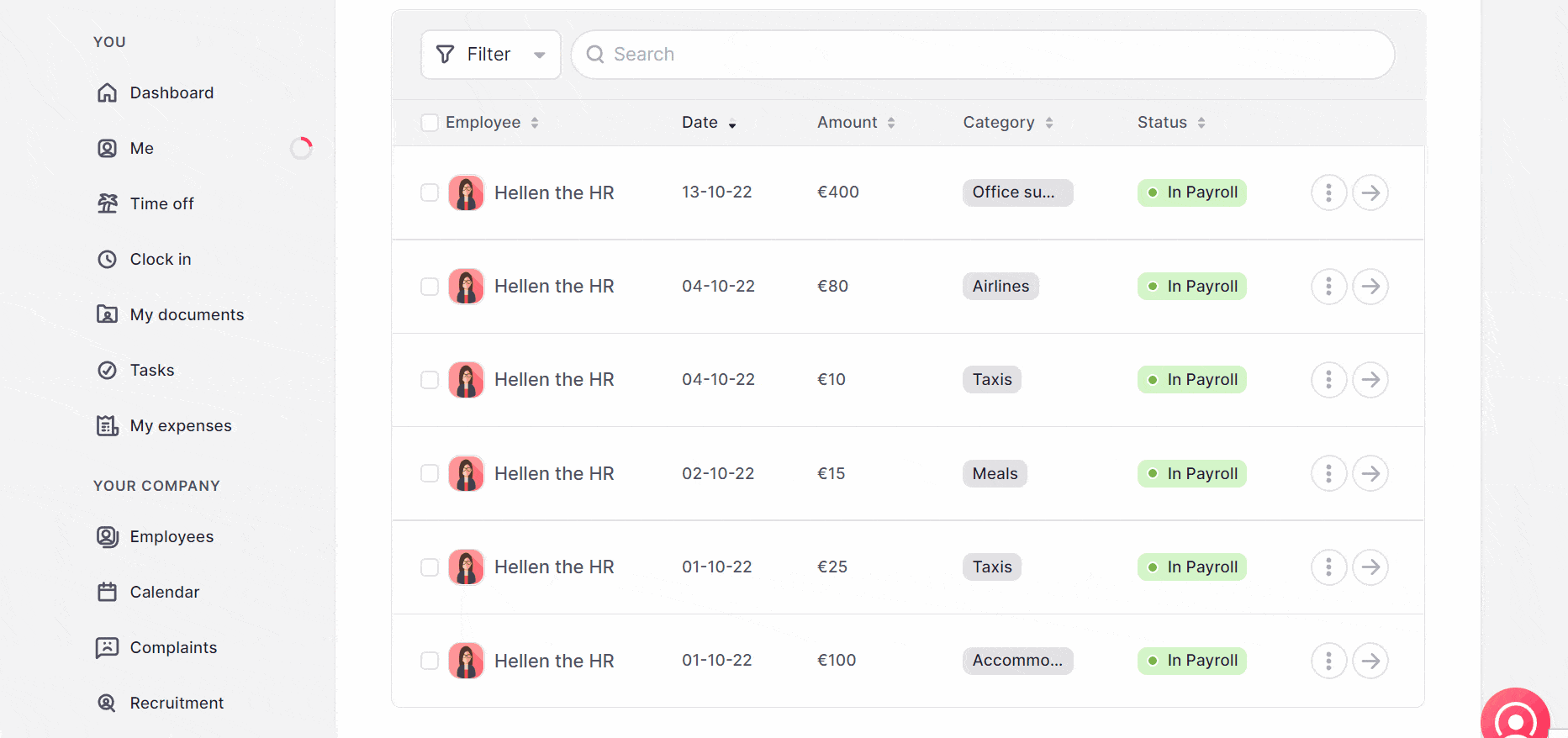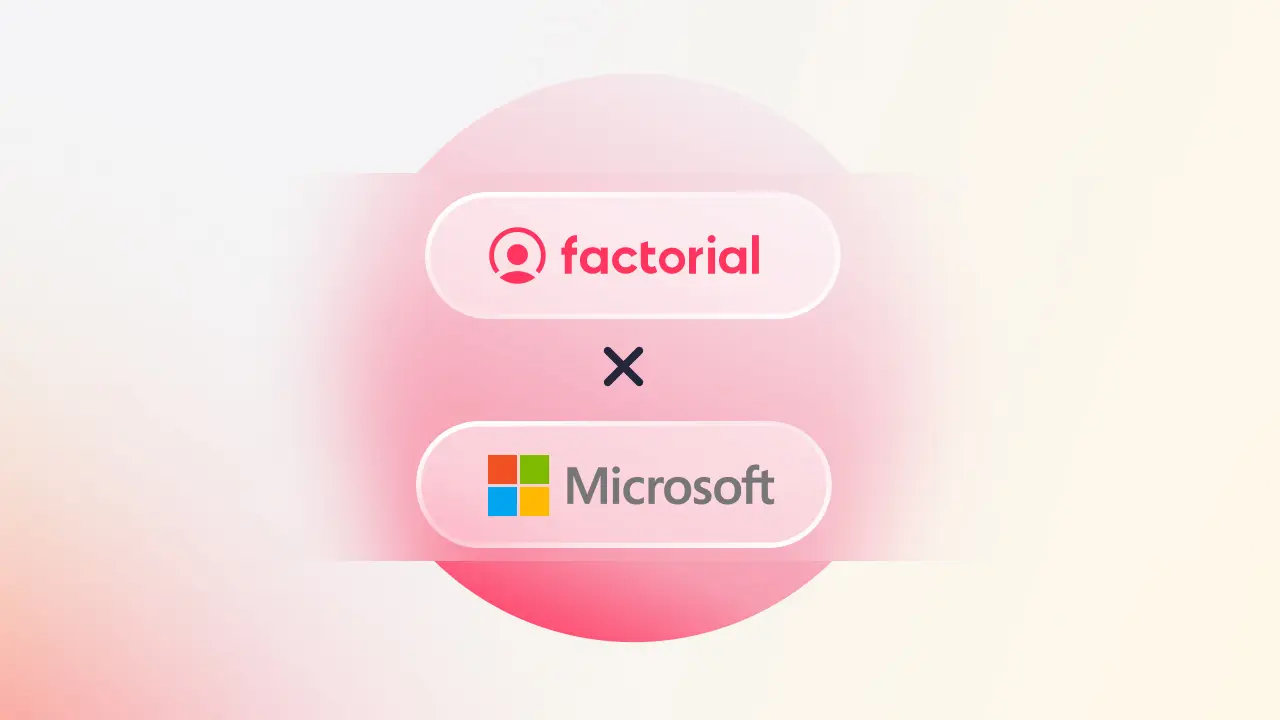According to the Fair Labor Standards Act (FLSA), you are not legally required to offer expense reimbursement to your employees unless the expense drops an employee’s pay below the established minimum wage. However, most organizations choose to do so as it is generally considered to be fair and common practice. It can also help to create a better employee experience, provided you create a clear and consistent policy for effective expense management. This means defining what you accept as an employee expense, how employees submit expense reimbursement requests, and how you incorporate expenses into your payroll process. You also need to understand what the IRS classifies as an expense from a tax point of view.
This guide will explain everything you need to know about expense management, including the expense reimbursement laws that you need to be aware of.
What is expense reimbursement?
Expense reimbursement is the process of repaying employees for any work-related out-of-pocket expenses they may have incurred. These might include expenses related to travel, tools and supplies, general business expenses, and employee stipends. Many organizations also reimburse expenses related to medical expenses, wellness initiatives, training and development, and equipment for employees who work remotely.
As an employer, if you do not provide your employees with a corporate credit card to cover any expenses that you cover, you need to ensure you have a clear expense reimbursement policy in place. That way, your employees will understand which expenses they will be reimbursed for, what the process for claiming is, and what your expense management procedures are. You also need to make sure you have a system in place for time and expense tracking and reporting. This will help you monitor your overall business expenses to ensure they remain within budget.
Types of expense reimbursement
Most organizations will encounter situations where they need to reimburse employees for certain expenses. This means that you need to have a clear understanding of what types of expenses they can claim for, and where you stand from a tax point of view.
Let’s start by looking at the different types of expense reimbursements that you might offer your employees.
According to IRS Publication 535, Business Expenses: “To be deductible, a business expense must be both ordinary and necessary. An ordinary expense is one that is common and accepted in your industry. A necessary expense is one that is helpful and appropriate for your trade or business. An expense does not have to be indispensable to be considered necessary.”
Generally speaking, this can include:
- Business expenses
- Auto mileage and travel reimbursement
- Medical expense reimbursement
- Employee stipends reimbursement
Let’s take a look at these types of expense reimbursement in a bit more detail.
Business expenses
Business expenses are classified as any costs that an employee has incurred whilst performing the duties of their job. According to the IRS, reimbursable expenses usually include the following:
- Business travel costs. This is an expense that one of your employees incurs during the course of work-related travel. This usually includes transportation (flights, trains, cabs, etc.) and accommodation. Meals and entertainment costs are only classified as business reimbursable expenses if they meet the criteria outlined in IRS Publication 463.
- Education or training, provided training is directly related to an employee’s role.
- Business supplies. Any supplies that an employee purchases for business purposes. You can reimburse these expenses at cost, provided your organization has an accountable plan.
- Business tools, such as tools and equipment used in your trade or computer software.
- Miscellaneous business-related expenses, such as petty cash or professional membership fees.
Auto mileage and travel reimbursement
The IRS also accepts auto mileage and travel expenses as a form of eligible employee expense reimbursement.
This includes:
- Standard mileage: The mileage corresponding to an employee’s business use of a personal vehicle whilst commuting to and from work or travelling to meet clients, for example. Most organizations use standard IRS mileage rates, known as cents per mile, to calculate mileage expense reimbursement.
- Per diem travel: You can also offer a fixed per diem allowance for accommodation if an employee travels for work. Alternatively, you can track receipts and reimburse expenses as and when they arise, although this obviously involves more work.
Medical expense reimbursement
You might also decide to supplement or reimburse your employees for their medical expenses or health care plans. These medical expense reimbursement plans (MERPs) are sometimes used as an alternative to traditional employee health plans. Also known as Section 105 plans.
Employee stipend reimbursement
Finally, according to the IRS, you can also reimburse qualified employee stipends if you choose to include these in your employee benefits packages. This can be a flexible and appealing way to attract and retain top talent. Stipends can also help to create a positive employee experience and raise motivation and satisfaction levels.
Essentially, a stipend is a set monthly allowance that you can offer employees for certain approved expenses.
These might include:
- Health stipends. Where you reimburse employees for certain qualifying medical expenses. Similar to an HRA, except they are taxable and have fewer restrictions.
- Wellness stipends. Where you reimburse employees for qualifying wellness expenses, such as gym memberships and fitness trackers.
- Remote work stipends. Where you provide remote employees with an established monthly allowance to reimburse their home office expenses. These expenses might include equipment and high-speed internet connections, for example.
- Education stipends. Where you reimburse employees for any education-related expenses. This might include tuition, student loans, and other professional development expenses. It can also include costs associated with professional training, higher education, or certifications.
Are expense reimbursements taxable?
As an employer, one of the many benefits of offering expense reimbursements to your employees is that some of them are deemed tax-deductible by the IRS. It’s important to understand which expenses are classified as tax-deductible so that you can process them through your payroll accordingly.
For a business expense to be deemed tax-deductible, it must fall under the definition of an accountable plan. An accountable plan follows IRS regulations for the reimbursement of expenses that are not counted as income. This means that reimbursements are not subject to withholding taxes or W-2 reporting.
Essentially, the expense must meet the following IRS guidelines:
- The expense is classified as a reasonable business expense and has been incurred whilst an employee was performing their contracted business activities.
- The employee applies for the expense to be reimbursed within a reasonable period of time. The IRS defines a reasonable time as 60 days after the expense is paid or incurred.
- Receipts are provided as supporting documents. These receipts need to include the date and time that the expense was incurred, how much the expense was, and what it was for.
- Any excess reimbursement or allowance is reimbursed by the employee within a reasonable time period (usually 120 days). For example, if you provide an employee with $50 to purchase office supplies but they only spent $25, they must pay you back the remaining $25 that they did not spend.
If an expense that you are processing meets the above guidelines, then you do not need to deduct income tax from it or include it in the associated employee’s W-2.
How to manage expense reimbursements
Expense management is an important element of effective human resource management. It ensures that your employees are reimbursed fairly for any expenses they may have paid on your organization’s behalf.
However, it’s important to make sure you implement a detailed expense reimbursement policy with clear procedures and guidelines so that your employees understand what they need to do in order to be reimbursed for any out-of-pocket business expenses.
Here’s what you need to do.
Design your expense reimbursement policy
The first thing you need to do is create an expense reimbursement policy that clearly defines all your guidelines and procedures. That way, your employees will understand which expenses they can claim, and what the process is for submitting a reimbursement claim.
Make sure your policy covers:
- The types of expenses that qualify for reimbursement.
- How reimbursements need to be submitted. (It’s a good idea to design a template for this unless you opt for automated expense reimbursement software. More on this shortly)
- Time limits for submitting requests.
- Supporting documents that employees must include with their requests. (Receipts or invoices)
- The person who is responsible for approving claims for expense reimbursements. (Departmental managers, HR, finance, etc.)
- Spending limits for each expense category.
- Any specific suppliers and vendors that you want your employees to use.
- How and when you will reimburse employees.
- The consequences of expense fraud and overspending.
Once you’ve defined your policy, make sure all your employees are aware of it and have access to it. Also, communicate any updates each time you review your policy.
Standardize requests
Make sure you create a clear and standardized process for submitting claims.
You have two options here. You can create a standardized template to gather all the information you need for each claim. However, this method can create additional work and can sometimes result in inconsistencies.
A much more effective way to standardize your requests is by usually expense automation tools and software. That way, it’s much easier for you and your employees to keep track of expenses. And once an employee sends a request, the system automatically sent to the right person for them to review it.
Centralize all expenses
It’s also important to centralize all your expenses so that you can access all your data from one place. Centralization is also essential if you receive a high volume of expense reimbursement requests from multiple departments. Plus, it makes it much easier to set up payroll when data is centralized so that taxes can be applied to reimbursements where necessary. Expense management software can be a great solution for this.
Another important benefit of centralizing all your expenses is that both you and your employees get a much better user experience. Employees can see the status of their requests from their own dashboard which reduces the time that your team has to spend dealing with status update requests.
Automate repetitive tasks
It’s a good idea to automate as many repetitive tasks as possible. This reduces the time that your team spends reviewing, approving and managing reimbursement requests. It also helps you ensure accuracy, especially in terms of tax deductions where applicable. And the faster you process expenses, the quicker you can reimburse your employees and the happier your workforce will be.
Track your expenses
Finally, make sure you regularly track your expense data by generating regular expense reports. This will help you identify if any specific employees or departments are overspending or requesting reimbursements for unqualified expenses. Tracking a regular expense report will also help you align your expenses with your defined budgets.
Expense reimbursement best practices
Here are a few expense reimbursement tips and best practices to help your policies and procedures run as smoothly as possible.
- Where possible, reimburse business expenses under an accountable plan to lower taxable business income.
- Ask your employees for detailed receipts for all expenses that they make a claim for. Receipts should include the name of the supplier, the date and time of the purchase, and an itemized list of all purchased items. Scrutinize all receipts to make sure all items qualify under your list of eligible expenses.
- Include a detailed explanation of what the consequences of expense fraud are in your policy. If you detect a suspicious claim, investigate it and, where appropriate, enforce these consequences.
- Make sure you enforce your expense reimbursement policy consistently at every level of your organization, including your executives. Make sure they understand that they must follow all your guidelines and procedures when they make a claim for expense reimbursement.
- It’s also a good idea to set spending limits and explain what the consequences are if an employee overspends.
- Review your expense reimbursement policy regularly. Make sure it complies with any federal and state updates relating to tax and expense reimbursement laws. Share your policy with all your employees each time you update it so that they are aware of any changes.
- Use the right tools and software to help you create efficient expense management processes and procedures. An expense management solution is the best option for this. Make sure that the solution you pick can be easily integrated with your payroll software. Ideally, it should also enable you to automate repetitive tasks to help you streamline the process.
Automate expense reimbursement through payroll with Factorial
As we just explained, using the right tools and software can help you create an efficient and streamlined process for effectively managing all your expense reimbursement claims.
For example, with Factorial’s expense management software solution:
- Employees can automatically upload their expenses and receipts and classify expenses according to categories.
- Managers can review expenses in their own time and accept or deny reimbursement requests.
- HR or finance can automatically generate expense reports and gain valuable insight into where money is being spent.

This makes it much easier for you to track all the expenses that your organization accrues. Plus, you can automate your expense reimbursement processes and integrate them with our payroll software. That way, you can be sure that you reimburse your employees on time and apply the right taxes where appropriate.
Check out this video for Factorial expense on our YouTube channel for more information on how our intuitive solution can help you create an effective expense management process for your small business.



